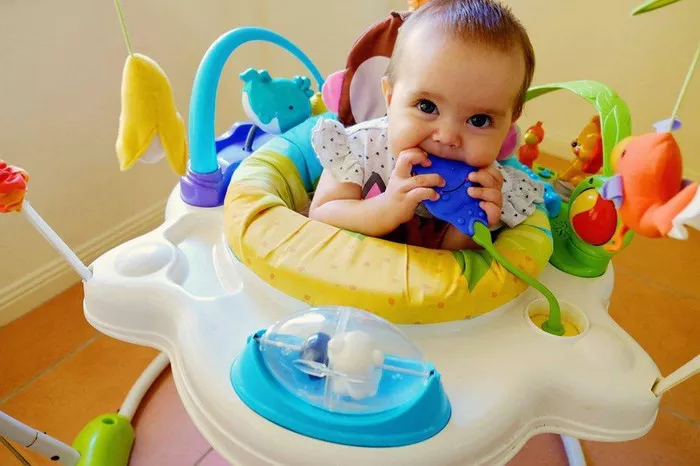In the realm of infant care products, sit-to-stand walkers have long been a staple for many parents. These devices, designed to aid infants in transitioning from sitting to standing and eventually walking, have sparked ongoing debates regarding their safety and efficacy. While they offer convenience and entertainment, concerns about potential risks have led many to question whether sit-to-stand walkers are truly safe for babies. This article aims to delve into this contentious issue, examining what baby walkers are, their safety implications, exploring alternatives, and outlining criteria for selecting safe options.
What are Baby Walkers?
Baby walkers, including sit-to-stand variants, are wheeled devices that allow infants to move around before they can walk independently. They typically consist of a frame with a suspended fabric seat and a tray for toys or snacks. Sit-to-stand walkers, specifically, provide additional features such as adjustable heights and interactive panels to encourage standing and walking motions.
The concept behind these walkers is to promote motor skill development by engaging infants in upright movement. However, their use has raised concerns among pediatricians and child safety experts due to associated risks.
Are Walkers Safe for Babies?
The safety of baby walkers has been a subject of intense scrutiny for decades. Despite their popularity, numerous studies have highlighted potential dangers associated with their use. One of the primary concerns is the risk of falls and injuries. The mobility provided by walkers can enable infants to reach hazardous areas or objects, leading to accidents such as falls down stairs or collisions with furniture.
Furthermore, the American Academy of Pediatrics (AAP) has long advised against the use of baby walkers, citing safety concerns. In 1994, they called for a ban on the sale of walkers in the United States, leading to significant declines in their usage. The AAP’s stance is supported by research indicating that walkers do not aid in the development of walking skills and may even delay this milestone.
Additionally, there are concerns about the impact of walkers on infant development. Some studies suggest that prolonged use of walkers may hinder the natural progression of motor skills, as infants rely on the support provided by the device rather than developing balance and coordination independently.
While modern sit-to-stand walkers may incorporate safety features such as braking mechanisms and height adjustability, they still pose inherent risks. The AAP continues to caution against their use, advocating for alternative methods to promote infant mobility and development.
Safe Alternatives to Baby Walkers
Despite the risks associated with traditional baby walkers, there are numerous safe alternatives available to parents seeking to encourage their infant’s mobility and development. These alternatives focus on fostering natural motor skill progression while minimizing the risk of accidents and injuries.
1. Stationary Activity Centers: Stationary activity centers provide a safe environment for infants to explore and play while remaining in a fixed position. These devices typically feature interactive toys and sensory activities designed to stimulate motor skills and cognitive development. Unlike walkers, they do not have wheels, reducing the risk of falls and collisions.
2. Push Toys: Push toys, such as wooden carts or wheeled animals, offer support for infants who are learning to stand and walk. These toys encourage balance and coordination while providing stability and control. Parents can supervise their child as they push the toy around, promoting independence without the risks associated with walkers.
3. Floor Time: Allowing infants plenty of supervised floor time is essential for promoting natural motor skill development. Providing a safe, unobstructed space for crawling, rolling, and exploring helps infants build strength, coordination, and confidence at their own pace. Simple toys and objects can be incorporated to encourage reaching, grasping, and pulling up.
4. Babywearing: Wearing your baby in a carrier or sling offers a hands-free way to keep them close while allowing them to observe the world around them. This promotes bonding between parent and child while providing opportunities for sensory stimulation and social interaction. Babywearing also supports healthy hip and spine development, unlike the unnatural posture often associated with walkers.
How We Chose Safe Baby Walker Alternatives
Selecting safe alternatives to baby walkers requires careful consideration of various factors, including safety, developmental benefits, and parental preferences. When choosing alternatives, parents should prioritize the following criteria:
1. Safety Features: Look for products that prioritize safety, such as stable bases, non-toxic materials, and age-appropriate designs. Avoid items with small parts that could pose choking hazards and ensure that all components are securely attached.
2. Developmental Benefits: Opt for toys and activities that support natural motor skill development and cognitive growth. Choose items that encourage exploration, problem-solving, and creativity, fostering a holistic approach to learning and development.
3. Parental Supervision: Regardless of the chosen alternative, parental supervision is crucial to ensuring infant safety. Stay actively engaged with your child during playtime, providing support and encouragement as they explore and learn.
4. Consultation with Pediatricians: When in doubt, consult with your child’s pediatrician for guidance on selecting appropriate toys and activities. Pediatricians can offer valuable insights based on your child’s unique developmental needs and any specific health considerations.
In conclusion, while sit-to-stand walkers may seem like a convenient solution for promoting infant mobility, their safety risks outweigh their potential benefits. By exploring safe alternatives and prioritizing natural motor skill development, parents can support their child’s growth and exploration in a secure and nurturing environment. Ultimately, the well-being and safety of our infants should always remain paramount, guiding our choices as caregivers and advocates for their healthy development.


